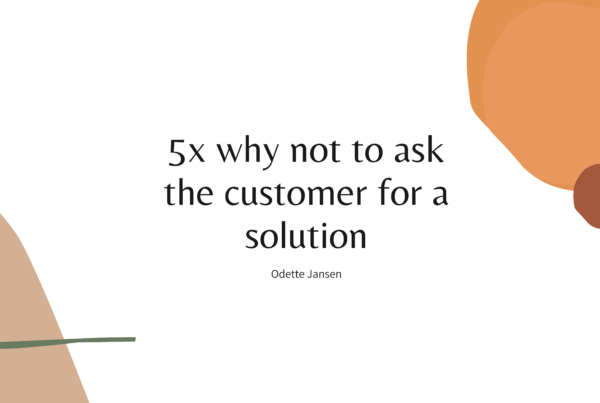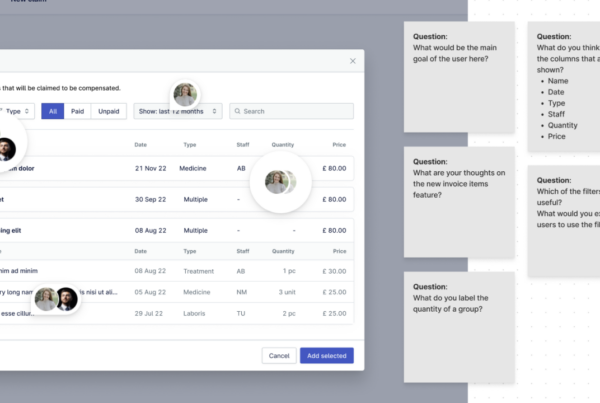Introduction
The world of SaaS and gaming might seem like they occupy different ends of the digital spectrum. While SaaS products focus on offering tools for business efficiency, games center on entertainment and emotional engagement. But here’s a thought: both are fundamentally about delivering a good user experience. So, why do we see such emphasis on measuring fun and emotions in games but not in SaaS?
SaaS, with its cloud-centric delivery and subscription models, has transformed the way businesses function. Their success metric? Usability and efficiency. On the other side, games rely heavily on the player’s emotional connection. Researchers, including Mandryk and Atkins (2007), have shown that emotions directly impact a player’s overall enjoyment, and by extension, a game’s success.
The disparity raises an intriguing question: If emotions play such a pivotal role in games, can SaaS products benefit from a similar approach? This article delves into the potential advantages of assessing user emotions in SaaS, arguing that it’s high time we bridge the gap between utility and enjoyment.
The Value of Emotions in Digital Products
When we think about using any digital product, be it a game or a business tool, it’s not just about completing a task. It’s about the experience. That journey, colored by emotions, plays a massive role in how we perceive the product’s value.
🏆 User Experience and Success: The success of any digital product, SaaS included, hinges on its user experience (UX). A good UX goes beyond usability—it encompasses how the user feels during and after their interaction (Jansen, 2022).
❤️ Emotions Drive Decisions: People might not always remember the specifics of a tool, but they certainly remember how it made them feel. Positive emotions like satisfaction, trust, and even delight can lead to increased product loyalty, more referrals, and higher retention rates.
😁 The Best Products Evoke Emotions: Consider the digital products you love. Chances are they aren’t just functional; they create an emotional connection. Whether it’s the satisfaction of seamlessly completing a task in a SaaS product or the thrill of levelling up in a game, emotions play a central role.
In the vast digital landscape, where numerous products offer similar functionalities, it’s the emotional aspect that can set a product apart. By understanding and valuing user emotions, SaaS product providers can elevate their offerings from mere tools to memorable experiences.
Why SaaS Products Don’t Traditionally Measure Enjoyment
Historically, the primary goal of SaaS products has been clear: solve specific business needs efficiently. This focus has, inadvertently, led to a sidelining of the emotional aspect of user experience. Let’s explore why.
💼 Business-First Mentality: SaaS products were born out of a need to address business challenges. Whether it’s streamlining operations, managing projects, or automating tasks, the spotlight has always been on functionality. With this mindset, measuring emotions might seem superfluous.
🧑🎨 Professional vs. Leisure Divide: There’s a prevailing notion that business tools need to be serious and no-nonsense. Unlike games, which are designed for leisure and entertainment, SaaS tools are professional utilities. This perception has contributed to the gap in emotional measurement.
🍀 Traditional Metrics of Success: In the SaaS world, success metrics have largely revolved around usability, effectiveness, and efficiency. Parameters like monthly active users, churn rate, and adoption rates take precedence. Emotional engagement, unfortunately, hasn’t been a standard KPI.
While these reasons offer some insight into the historical context, it’s essential to challenge the status quo. Just because SaaS tools are designed for business doesn’t mean they should ignore the human element. After all, behind every business task is an individual with emotions, preferences, and expectations.
Implementing Emotional Metrics in SaaS Products
While traditional SaaS metrics have honed in on usability and efficiency, there’s a strong case to be made for integrating emotional metrics. Here’s how and why it should be done.
💜 Depth of Emotional Metrics: Yes, measuring satisfaction or frustration is essential. But diving deeper, we need metrics capturing product engagement, happiness, and even fun, tailored to each SaaS product’s nature to really create a user experience that will sell itself.
💰 Balancing Revenue and Emotion: A product designed for positive emotions can sell itself. The challenge? Merging the revenue-centric approach of SaaS with the understanding that happy users equate to better business outcomes. User privacy is crucial, hence the need for stringent consent forms and adhering to privacy regulations.
🌎 Real-world Applications: Companies, like Nordhealth, are exploring metrics for customer satisfaction and pinpointing frustration hotspots within products. However, broader positive emotional metrics like fun and happiness remain largely untapped territories.
⭐️ The ROI of Emotions: Happier users lead to glowing reviews and organic referrals, culminating in more sales. Building a framework to decode emotional engagement levels could unlock valuable insights, though comprehensive research in this domain remains a work in progress.
🤔 User Receptivity to Emotional Metrics: Emotions are personal. Cultural nuances mean that one user’s willingness might differ from another’s. The key? Transparency. Showcasing the benefits, outcomes, and success stories can help users see the bigger picture and encourage participation.
📚 Equipping UX Teams: It’s time for UX Research to evolve. Beyond standard usability tests, there’s a need to gauge engagement, observe body language, and interpret vocal tones. Many UX researchers might need grounding in motivational theories and body language nuances to fully capture the emotional spectrum but doing so will ensure a future for SaaS products.
🔮 Future of Emotional Metrics in SaaS: In a saturated market, SaaS products that prioritize users’ emotional experiences will undoubtedly stand out. Ensuring user happiness can transform them into product ambassadors. The caveat? UX research teams must be empowered with the right tools to harness these emotional insights.
The Ripple Effects of Emotionally-Driven SaaS Products
When we prioritize users’ emotional experiences in SaaS design, the benefits aren’t just restricted to the individual user. The impact resonates wider, creating a ripple effect that can redefine the entire industry and beyond. Here’s how:
🐶 Reimagined Product Loyalty: When users find joy, engagement, and even fun in a SaaS product, their loyalty isn’t just about habit—it becomes emotional. This loyalty is resilient and harder to shake off, offering businesses a more stable and loyal customer base.
💬 Empowered Word-of-Mouth Marketing: Happy users don’t just stay—they talk. They share their positive experiences, bringing in organic referrals. In an age where consumers trust peer reviews over adverts, emotionally satisfied users become invaluable brand ambassadors.
🥹 Elevated Industry Standards: As more SaaS businesses recognize the value of prioritizing emotions, it sets a new standard in the industry. Over time, emotional design could transition from being a unique selling point to an industry expectation.
💻 Enhanced Work Culture and Productivity: SaaS products are embedded into countless workplaces. When these tools promote positive emotions, it indirectly fosters a happier work culture. And a happier work environment? It invariably boosts productivity and well-being.
😁 The Societal Impact: This might seem far-fetched, but consider the global scale of SaaS usage. When millions find happiness and motivation in their daily tools, it subtly elevates the collective mood, paving the way for a more positive digital society.
Measuring Emotions in SaaS Products
It’s one thing to acknowledge the importance of emotions in SaaS products, but how do we go about measuring them? Here’s a methodological approach to tap into the emotional pulse of your users.
❓Survey Instruments: While traditionally used for capturing user satisfaction, surveys can be tweaked to probe deeper into emotional experiences. Questions like, “How did this feature make you feel?” can offer invaluable insights. Remember, the key is to be specific, not just broad.
🫀 Biometric Tools: Technologies like facial recognition, eye-tracking, and heart rate monitors, while more prevalent in gaming UX, have immense potential for SaaS. These tools can provide real-time feedback on users’ emotional states, offering a level of depth surveys might miss.
📈 Behavioral Analytics: Beyond just clicks and scrolls, monitor how users interact with your product. Prolonged hesitations, rapid clicks, or frequent switching between tabs can be indicative of underlying emotional responses, be it confusion, frustration, or intrigue.
🎙️ Feedback & Interview Sessions: Engage in dialogue through a variety of research methods. User interviews provide one-on-one insights, focus groups help capture collective emotional dynamics, and speed dating sessions can quickly gauge initial emotional reactions to new features or ideas. The essence is to create an environment where users feel comfortable sharing their genuine feelings.
🤩 Emotion-Driven Metrics: Develop specific KPIs centered around emotions. For instance, an ‘Engagement Score’ or ‘Happiness Score’ could be a metric that combines usability with the element of delight users experience when engaging with a particular feature.
🔁 Iterate and Re-measure: Emotional experiences are dynamic. Regularly revisit these metrics, adjust based on feedback, and ensure your product continues to resonate emotionally with users.
Measuring emotions in SaaS products requires a blend of technology, intuition, and constant dialogue with users. It’s not just about numbers and data, but about understanding the human nuances behind every interaction.
Potential Challenges and Criticisms of Emotion-Centric SaaS Design
While the integration of emotional insights into SaaS product design seems promising, it isn’t devoid of challenges and critics. Here’s a breakdown of potential roadblocks and the criticisms often lobbed at this approach:
1. Privacy Concerns: Introducing emotion-driven metrics, especially using biometric tools, may raise concerns about user privacy. Not all users will be comfortable with having their emotional reactions tracked and analyzed, even if it’s for product improvement.
2. Quantifying Emotions: Emotions are inherently subjective and complex. Developing universally accepted metrics that can capture the myriad of human feelings can be a daunting challenge.
3. Misinterpretation Risks: Emotional data, when misunderstood, can lead to misguided design decisions. A user’s hesitance might be perceived as confusion when, in reality, they could be reflecting or deep in thought.
4. Resource Intensiveness: Setting up, monitoring, and analyzing emotional metrics can demand substantial resources. Critics argue that these resources might be better spent on other aspects of product development.
5. Overshadowing Core Functionalities: There’s a risk of becoming too engrossed in the emotional aspects and neglecting the core functionalities. After all, a SaaS product’s primary goal is to provide a service, and it should do that efficiently.
6. Cultural Nuances: Emotions are deeply rooted in culture. What’s considered a positive emotional experience in one culture might not resonate similarly in another. Designing with global emotional insights can be tricky if done without the proper cultural knowledge.
7. Skepticism on ROI: It’s a general sentiment that skepticism arises when changes are introduced. therefore its highly likely that the return on investment (ROI) of emotion-centric design is questioned. Possibly seeing it as a nice-to-have rather than a necessity.
8. Potential for Manipulation: There’s a thin line between designing for emotions to enhance user experience and manipulating users to feel a certain way for business gains. Ethical considerations are extremely important to design before even attempting to uncover a users emotions.
Embracing emotion in SaaS design is a progressive step, but it’s essential to be mindful of these challenges and criticisms. Addressing them head-on will ensure a balanced and ethical approach to creating genuinely engaging and emotionally resonant products.
Conclusion: The Future of SaaS Lies in Emotion
SaaS products have historically focused on efficiency and functionality. But in a digital age where user experience is paramount, emotions cannot be ignored. As Maya Angelou once said, “People will forget what you said, people will forget what you did, but people will never forget how you made them feel.” Games have grasped this, making strong emotional connections with players. It’s time for SaaS products to do the same.
While challenges like privacy concerns, cultural nuances, and potential misinterpretation exist, the potential rewards are compelling. Think loyal users, word-of-mouth promotion, and setting a new industry standard.
The tools and methodologies to measure emotions will refine over time. Early adopters in the SaaS domain who embrace this emotional shift are poised to benefit most.
Ultimately, it’s not just about the utility of your SaaS product; it’s about the emotional connection it fosters. This could be the defining edge in the ultra-competitive SaaS landscape. Embrace emotions, and let them redefine your product’s success.
References
- Photo by Austin Distel on Unsplash




